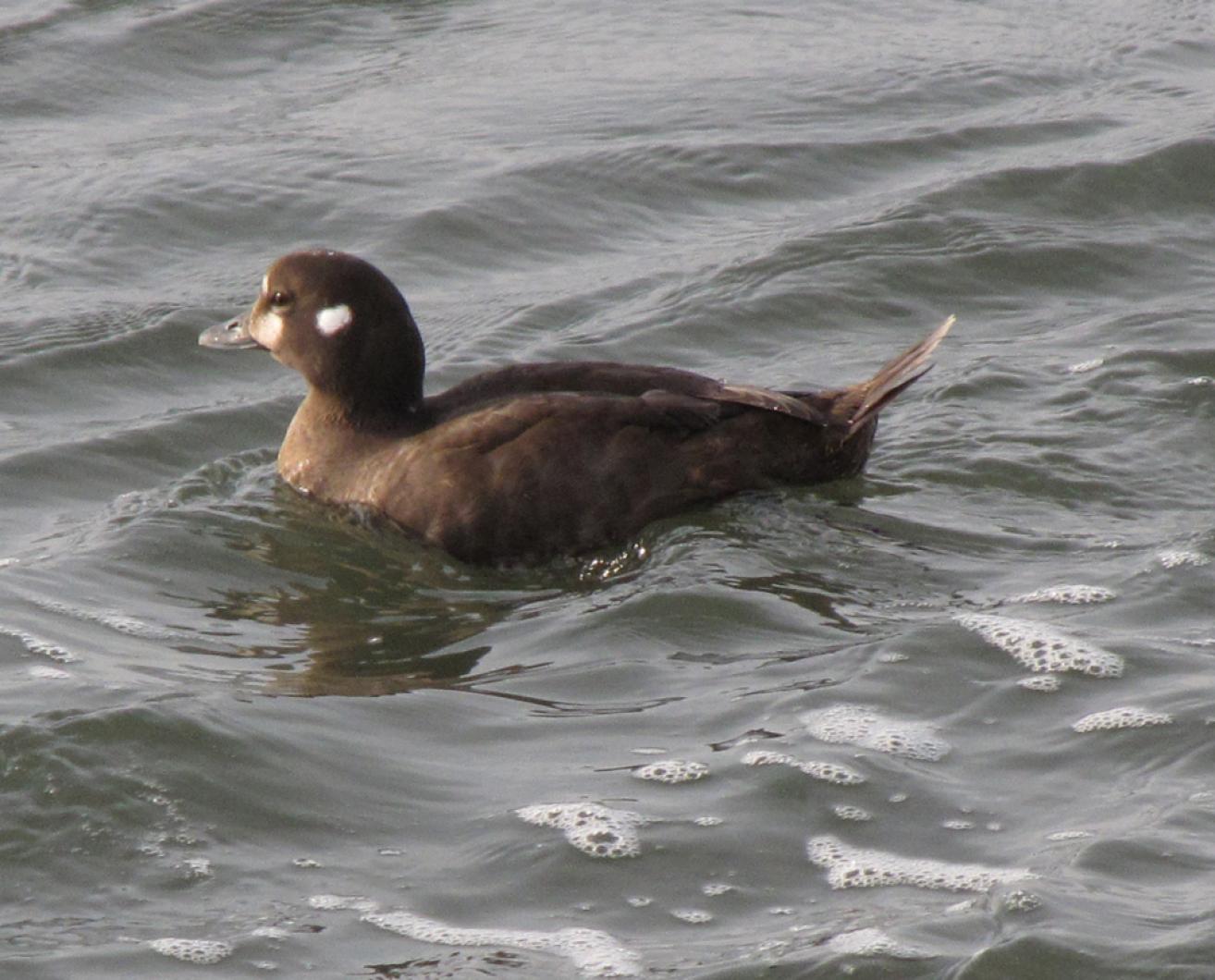Thirteen years ago, in 1997, we first heard about the Space Coast Birding and Wildlife Festival in Titusville, Fla. The venue for this festival is the Brevard Community College North Campus. Strategically located next to Cape Canaveral, the Merritt Island National Wildlife Refuge and many other birding hot spots, this festival is in a prime location for bird watching.
Titusville is a small town and as such has some nice family-run restaurants, interesting history and culture as well as the space center. This festival is the result of the dream of Laurilee Thompson who grew up in a fishing family. Her father was a boat builder and fisherman, and Laurilee was the captain of one of her father’s boats as were her brothers. The family also had a seafood restaurant in town. Laurilee left the sea to help her family with the Dixie Crossroads Restaurant but that wasn’t enough. She wanted people to see Titusville and the area as a world class ecotourism location. Laurilee teamed up with Neta Harris of the Brevard Nature Alliance. The first year of the festival coincided with the opening of the Great Florida Birding Trail. These two women organized fabulous bird trips, lectures and workshops as well as a few vendors selling birding equipment and great food!
This festival has grown to be the largest in Florida and one of the largest in the U.S. as a result of the hard work of Laurilee, Neta and a great group of volunteers from the area. Florida boasts the greatest number of bird species in the eastern U.S. and the Great Florida Bird Trail has over 500 locations birders can visit.
This year the Gull Conference 2010 was a special feature of the 13th annual Space Coast Birding and Wildlife Festival. The cast of experts that started the first gull conference were there to share their knowledge. Flip and I spent a good chunk of our time on the beaches with this group. Immature gulls have never been an easy ID process for me. The thousands of gulls on the Daytona Shores beach in the late afternoon were astounding! We peered through scopes checking leg color, back color patterns, size of bill, shape of head, under wing and rump colors as well as overall size. We also heard that identifying young gulls in the summer months of July and August is particularly tough as they are in worn plumages, which makes field marks fuzzy at best.
The most exciting event came when one of the pros spotted an immature yellow-legged gull! We saw it also. This gull is from Europe and definitely was on walkabout. And speaking of walkabout, other birds spotted in Florida from field trips from the festival this year included a harlequin duck and a masked duck, and we heard that an ivory gull had been seen on the west coast of Florida and an American puffin was found dead in Hobe Sound on the east coast of Florida. None of the above species are Florida residents to say the least.
Bird Sightings
The Great Backyard Bird Count is coming soon. It will run from Feb. 12 to 15. This is a count cosponsored by the Cornell Lab of Ornithology and National Audubon Society. It is fun. All you have to do is count the birds you see and write down the highest number of individual birds you see at one time and after 15 minutes of watching report your results at birdcount.org. Check this Web site for complete instructions.
Tim and Sheila Baird had an unusual meeting with a hen (female) common eider on Jan. 31. They were driving down to Katama where in the western parking lot they spotted the eider waddling down the road away from the water with masses of monofilament line around her neck. Tim got out of the car and stood in her path and was able to catch her easily. He brought her to the car, removed the line and then took her to the east part of Herring Creek and released her in the water, last seen swimming toward Katama Bay. The Bairds also spotted an American kestrel on the East Chop side of Oak Bluffs harbor the same day.
Laura and Chris Murphy counted 10 sanderlings feeding on the shore at Lambert’s Cove Beach and six American wigeon in the Mill Pond on Jan. 27.
Luanne Johnson was getting eggs at Cottle’s on Jan. 22 when she spotted the Baltimore oriole. Wonder if it is still around? Priscilla Sinatra of Jernegan avenue called on Jan. 30 to say an Eastern bluebird was eating scraps of suet that fell off when other birds ate. She mentioned the bluebird went on the suet but preferred to take the scraps, not chisel himself.
Rob Culbert checked out the Lagoon on Jan. 31 and found a good selection of waterfowl including common bufflehead, ring-necked ducks, mallard and black ducks. Also seen were red-breasted and hooded mergansers, great cormorants and herring, ring-billed and black-backed gulls. The normal fare for winter months.
Tom Rivers has a heated bird bath on his porch and along with chickadees, tufted titmice and song and white-throated sparrows he had, on Jan. 31 and Feb. 1, a hermit thrust bathing.
Sarah Mayhew counted 20 common goldeneyes off Cedar Tree Neck on Feb. 1. The same day Claudia Rogers spotted a northern harrier and yellow rumped warblers at Katama.
Robert Green of Watcha Path in Edgartown spotted a mystery yellow bird. He thought it might be a yellow warbler, but without a picture this would be hard to verify as these warblers are in Central and South America at this time of year. Hope it comes back.
Please report your bird sightings to the Martha’s Vineyard Bird Hotline at 508-627-4922 or e-mail to birds@mvgazette.com.
Susan B. Whiting is the coauthor of Vineyard Birds and Vineyard Birds II. Her Web site is vineyardbirds.com.




Comments
Comment policy »